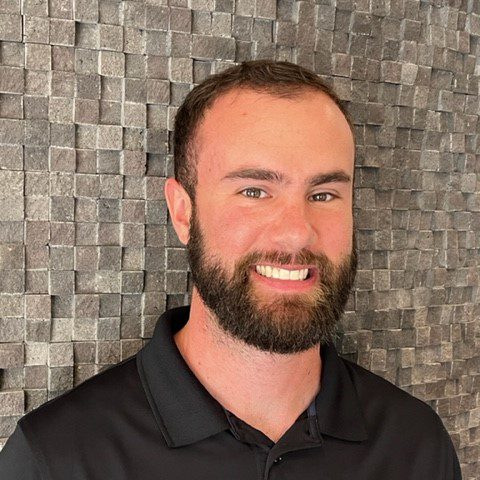Pain in the elbow is no joke. As one of the most mobile joints in the body, it can be hard to treat the elbow for pain since the common advice to “rest the joint” is difficult to accomplish when the elbow is instrumental in almost all upper body movements. So, what can you do for elbow pain that starts to limit your active lifestyle? It turns out that regenerative medicine may have the answers.
How PRP Therapy May Help Relieve Elbow Pain
One of the hallmarks of regenerative medicine is PRP, which stands for platelet-rich plasma, a substance composed of your body’s own blood plasma. Regenerative medicine focuses on utilizing the power of your body’s natural regenerative properties, such as healing factors that can be found in the skin and blood. The human body is capable of incredible feats of healing – all regenerative medicine does is emphasize and focus these abilities on particular areas of the body.
For pain in the elbow, a regenerative technique like PRP can be immensely helpful. The natural healing properties in PRP can increase blood flow to the elbow, help regenerate worn-down tissue, and even alleviate swelling that may be placing pressure on sore joints. In fact, for treating the elbow, PRP treatments may be one of the best solutions, particularly if you would prefer to use a natural approach to alleviating pain.
Is PRP Better Than Other Treatments for the Elbow?
For the longest time, the solution to any joint pain has been corticosteroid injections. But while corticosteroid injections are fast-paced and effective solutions for pain, steroid shots don’t address the root cause of joint pain and only serve to prolong further joint degeneration. In other words, corticosteroid shots are a bandaid fix and won’t help you in the long run.
That’s why PRP is so exciting. Not only does PRP have the same pain-relieving aspects of traditional injection treatments, but PRP can also work to heal the root cause of pain. In fact, some research suggests that PRP injections are much more effective than corticosteroids, both in the short-term and in the long-term for your quality of life.
How Does PRP Treatment Work?
PRP treatments are straightforward appointments that will take about 30 minutes to complete. PRP treatments are done through injections of your own blood plasma into the affected area. For the elbow, typically several injections are made into the tissue around the joint to rebuild cartilage and healing stressed tendons.
Creating PRP from your own blood is a simple two-step process. The first step is a blood draw where we will take a sample of your blood, usually about the same amount you would give to run basic blood tests from your primary care physician. Then your blood will be placed into a special centrifuge that will spin your blood rapidly to separate your red blood cells from the plasma in your blood. The result will be a clear or pinkish substance (your blood plasma) that will be placed into a syringe and then injected into the affected area.
Is PRP Treatment Safe?
Yes! PRP treatments are incredibly safe, just like most regenerative medicine treatments. Because PRP is derived from your own blood plasma, you will not have to worry about any allergic reactions or complications from the treatment. Additionally, your blood plasma contains natural healing properties that get to work right away, so there isn’t any need for significant downtime or restrictions you will need to follow after your appointment.
How Quick Are PRP Treatment Results?
Most of the time, the results of PRP treatments are very quick. Some people will notice an improvement in their pain within several days after the PRP injections. However, it will take some time for the results of PRP to become evident. Usually, PRP treatments require at least two to four weeks to show significant improvements in movement and pain since your body needs time to regenerate tissue.
What Causes Elbow Pain?
The cause of pain in the elbow is fairly simple. The elbow is a complicated joint that is composed of the joining of three different bones in the arms and includes a single exposed nerve, also known as the “funny bone”. Over time, the cartilage between these three bones around the elbow joint can wear down, causing the bones and nerves to rub against each other and cause pain. But what about specific causes? Most of the time, elbow pain is caused by one of two factors, including:
Tennis Elbow
Tennis elbow is often the most common cause of pain in the elbow. Tennis elbow is a result of damage to the tendons around the elbow from overuse. Many athletes suffer from tennis elbow, but those who work physically demanding jobs or jobs that require repetitive movement may also experience tennis elbow.
Because it takes a significant period of time for tendons to heal, many people can live with the pain of tennis elbow for several months or years if left untreated.
Arthritis
Arthritis is another common cause of pain in the elbow. Both rheumatoid arthritis and osteoarthritis can cause pain and swelling in the elbow. While rheumatoid arthritis causes the immune system to attack the elbow joint, osteoarthritis causes the cartilage around the elbow to break down so that the bones in the elbow rub against each other.
PRP treatments can regenerate elbow cartilage and calm the immune system to relieve pain.
Can You Use PRP With Other Treatments?
Yes. In fact, for some people, it may be more effective to combine PRP treatments for the elbow with other treatments. For example, PRP can be used as an accelerant that makes other treatments, such as B3 Regen, more effective and produce longer-lasting results. This is because the regenerative qualities of PRP treatments heal damage while other treatments address other causes of pain.
Can PRP Treatments Help With More Than Elbow Pain?
Absolutely. PRP treatments are commonly used to treat joint pain all over the body, including areas such as the hands and knees. If you are interested in using this treatment to address pain in other joints, please let us know during your consultation so we can personalize your treatment plan to meet your needs.
Additionally, PRP treatments can treat much more than elbow or joint pain. For example, PRP treatments are being explored to treat hair regrowth, sexual health for women and men, and rejuvenating treatments for the skin. Research is still being done to test the limits and abilities of PRP treatments for regenerative health.
Who Are Good Candidates?
Good candidates for PRP treatments include those who have pain in the elbow joint or the tendons around the elbow. Good candidates may be those who would prefer a non-surgical solution to pain and swelling in the joints, as well as those who have not achieved their desired results with other treatment options.
Get Back to Your Active Lifestyle
Leading an active lifestyle is essential to leading a healthy life – but it can be hard to be active when you are experiencing persistent joint pain. Instead of using a corticosteroid, PRP treatments may be able to alleviate your discomfort more effectively. To learn more about how PRP Therapy can help you get back to an active lifestyle, contact B3 Medical in Wesley Chapel, FL today.



























